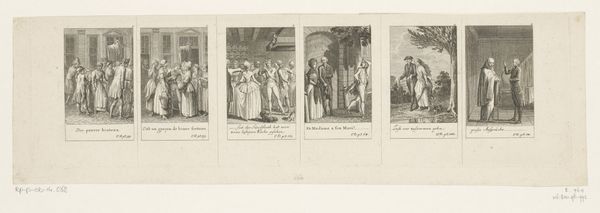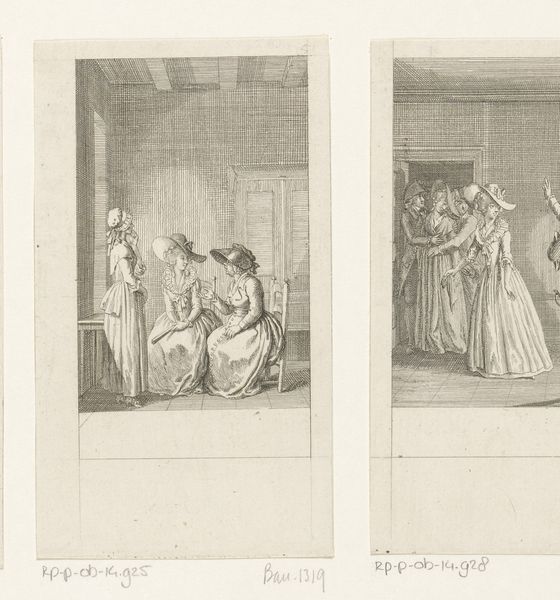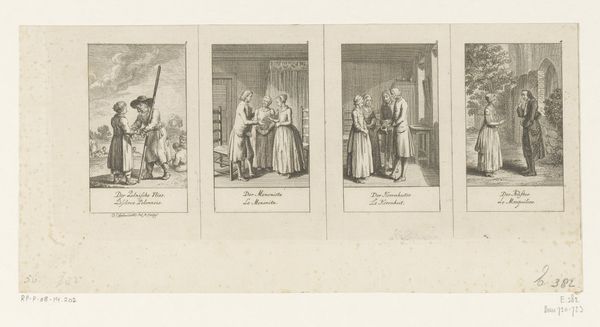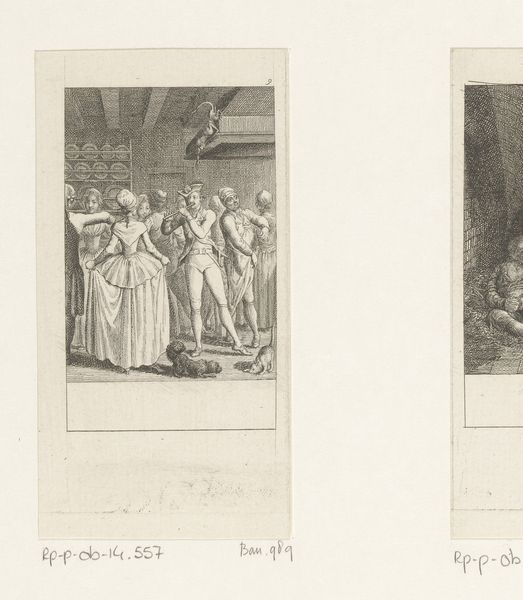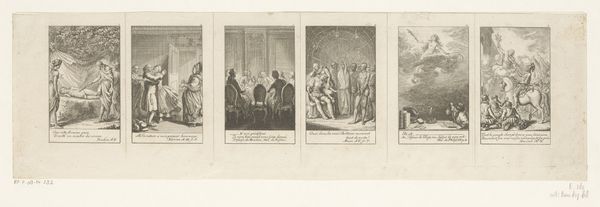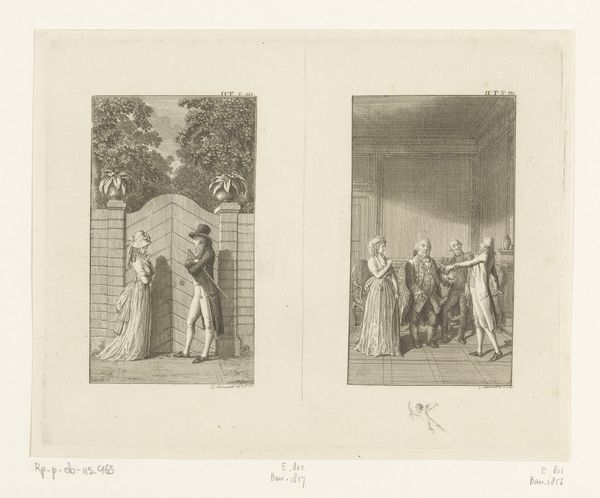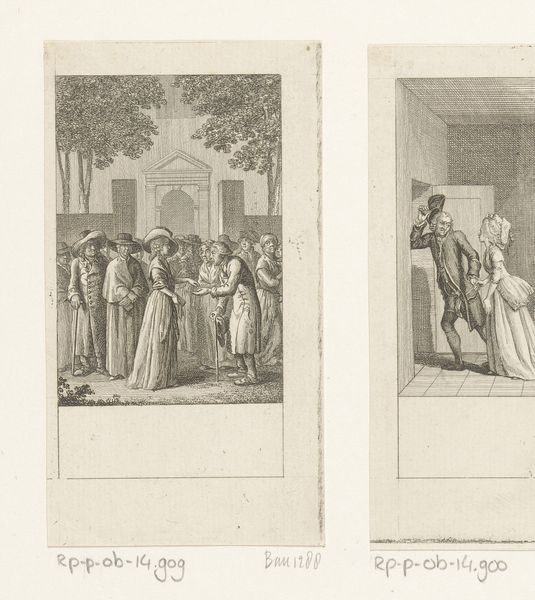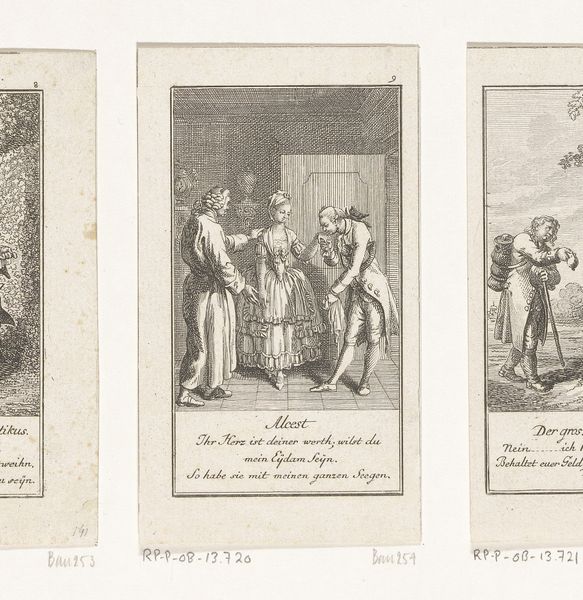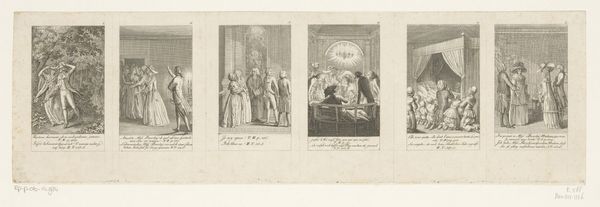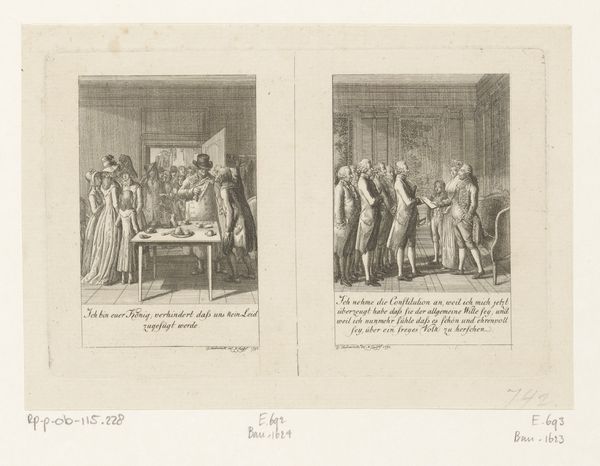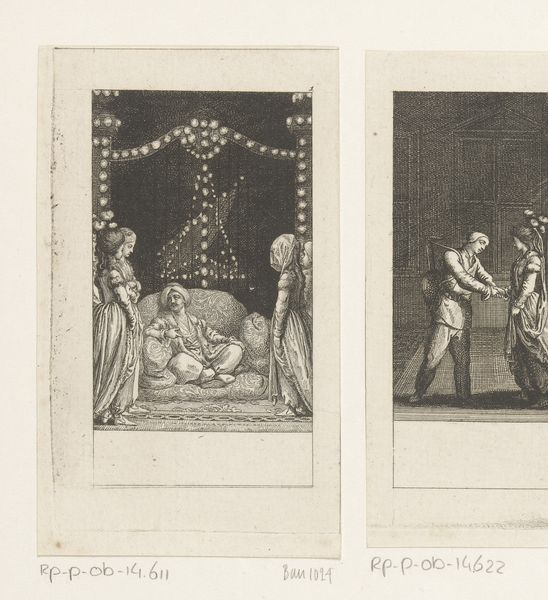
print, paper, engraving
#
pencil drawn
#
neoclacissism
#
ink paper printed
# print
#
pencil sketch
#
paper
#
genre-painting
#
engraving
Dimensions: height 113 mm, width 365 mm
Copyright: Rijks Museum: Open Domain
Curator: Let's turn our attention to this 1786 print by Daniel Nikolaus Chodowiecki, "Zes voorstellingen uit Die Jäger van Iffland," housed here at the Rijksmuseum. Editor: My first thought is how theatrical it feels. Six scenes presented in a row like that, almost like storyboards or a comic strip – a very contained narrative unfolding before us. Curator: That’s perceptive. Chodowiecki was very interested in theatre, and these scenes depict moments from August Wilhelm Iffland’s play, "The Huntsmen." He captured these genre scenes with incredibly detailed engraving work, printed on paper. What I find fascinating is the artist's attempt to make accessible theatre imagery through these mass-produced prints. This was the artist trying to give common people access to dramatic pieces, thereby giving common people access to culture. Editor: Interesting that you use the word "accessible," since a glance at the expressions shows moments of tension and negotiation. This makes me curious about the social dynamics within Iffland’s original story and how Chodowiecki amplifies them, for example looking at the clear economic imbalance on show. Does art truly make anything "accessible" just by it depicting it? The context of production and consumption really determines the reach and meaning here. What choices did Chodowiecki have in popularizing a potentially politically neutral text? Curator: Precisely. Chodowiecki walks this line well, presenting narratives in an accessible manner. He seems concerned with not only providing an entertaining glimpse into domestic scenes but subtly reflecting and influencing the period's understanding of virtue and social order. Editor: I see your point. But ultimately, I can't separate these illustrations from the wider debates surrounding representation and access. Are they truly democratizing art, or do they merely reinforce existing power structures through carefully chosen narratives for bourgeois consumption? And can an image be progressive, or should that only be decided by the consumer? It strikes me, however, that for today's viewers, these pieces retain the power to pose those vital questions about societal consumption. Curator: It's always a balance, isn't it? His dedication to this medium certainly reflects a wish to make these stories widely known. Editor: Yes, and this piece helps to reflect not just the history it portrays, but what the intentions behind showing those things might have been. It’s worth a deep look.
Comments
No comments
Be the first to comment and join the conversation on the ultimate creative platform.
